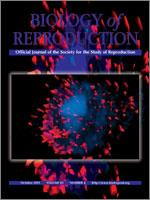Preimplantation mouse embryos of many strains become arrested at the 2-cell stage if the osmolarity of culture medium that normally supports development to blastocysts is raised to approximately that of their normal physiological environment in the oviduct. Arrest can be prevented if molecules that serve as “organic osmolytes” are present in the medium, because organic osmolytes, principally glycine, are accumulated by embryos to provide intracellular osmotic support and regulate cell volume. Medium with an osmolarity of 310 mOsM induced arrest of approximately 80% of CF1 mouse embryos at the 2-cell stage, in contrast to the approximately 100% that progressed beyond the 2-cell stage at 250 or 301 mOsM with glycine. The nature of this arrest induced by physiological levels of osmolarity is unknown. Arrest was reversible by transfer to lower-osmolarity medium at any point during the 2-cell stage, but not after embryos would normally have progressed to the 4-cell stage. Cessation of development likely was not due to apoptosis, as shown by lack of external annexin V binding, detectable cytochrome c release from mitochondria, or nuclear DNA fragmentation. Two-cell embryos cultured at 310 mOsM progressed through the S phase, and zygotic genome activation markers were expressed. However, most embryos failed to initiate the M phase, as evidenced by intact nuclei with decondensed chromosomes, low M-phase promoting factor activity, and an inactive form of CDK1, although a few blastomeres were arrested in metaphase. Thus, embryos become arrested late in the G2 stage of the second embryonic cell cycle when stressed by physiological osmolarity in the absence of organic osmolytes.
How to translate text using browser tools
22 June 2011
Mouse Embryos Stressed by Physiological Levels of Osmolarity Become Arrested in the Late 2-Cell Stage Before Entry into M Phase
Fang Wang,
Megan Kooistra,
Martin Lee,
Lin Liu,
Jay M. Baltz
ACCESS THE FULL ARTICLE

Biology of Reproduction
Vol. 85 • No. 4
October 2011
Vol. 85 • No. 4
October 2011
cell cycle
culture
Developmental arrest
embryo culture
osmolarity
preimplantation embryo
rodents (rats, mice, guinea pigs, voles)




